Blend the Past with the Present | 5 Ways to Love Old Houses
A designer’s 1745 Connecticut farmhouse is a master class in bringing modern-day flair to an antique home.
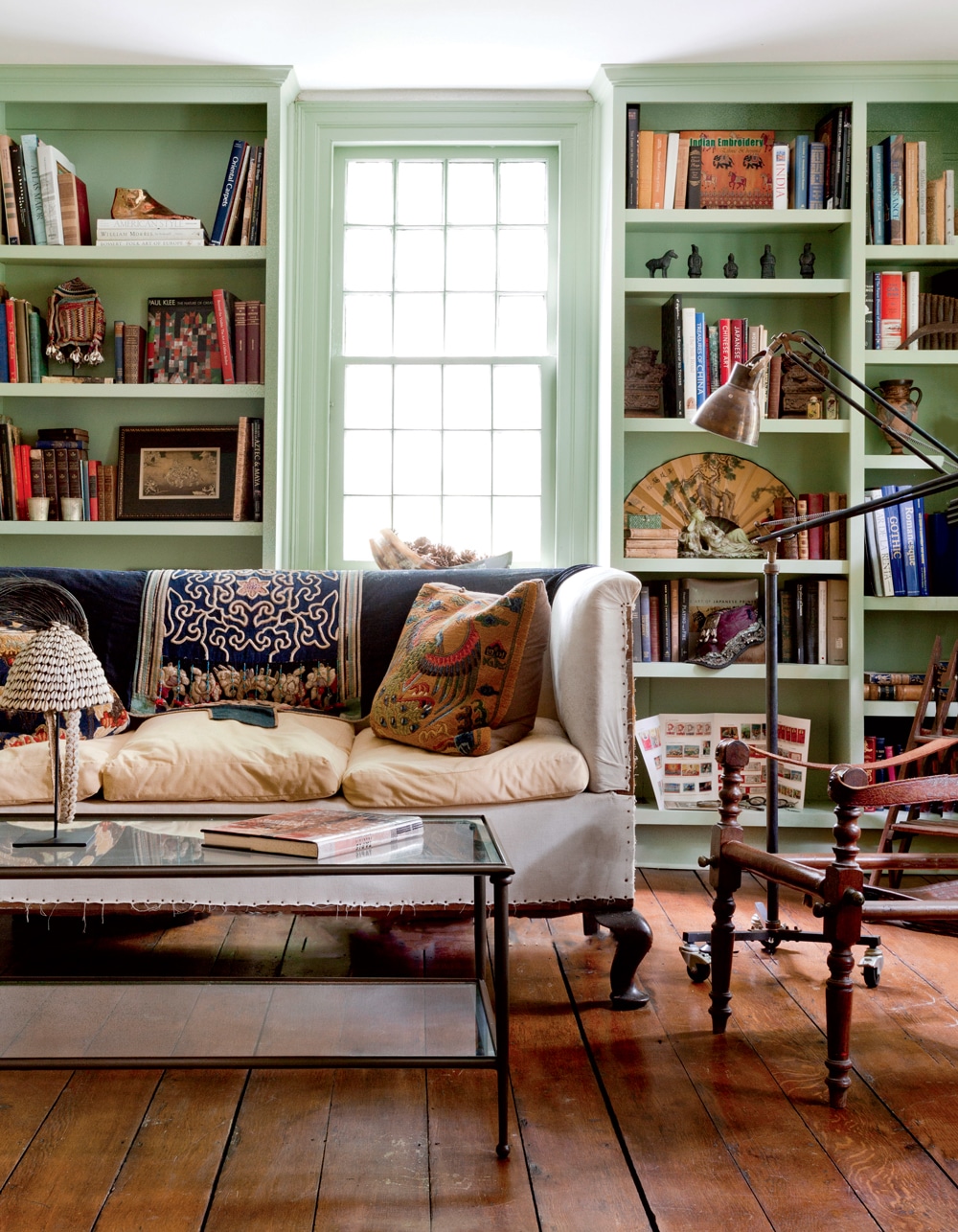
Built-in bookcases showcase Allen’s global inspirations.
Photo Credit : Rikki Snyderby Alexandra Hall
The enclosed porch jutting out from Ellen Allen’s 1745 farmhouse in Woodbury, Connecticut, is a crossroads of many sorts: between indoor life and the organized pandemonium of nature; between private and shared space; between New England simplicity and global sensibility; and, finally, between the home’s historic past and its ever-evolving future.
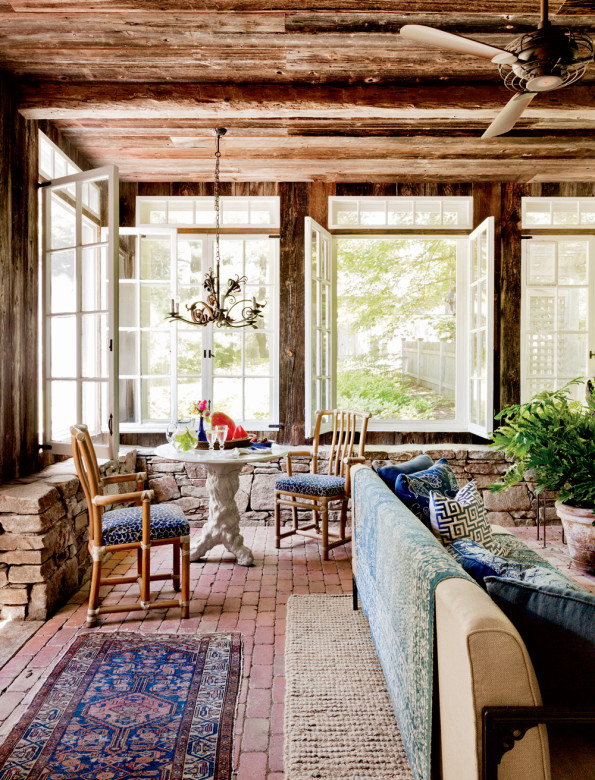
Photo Credit : Rikki Snyder
On late afternoons, the porch is where you’ll find Allen, a designer of decorative rugs and a figure in the Manhattan textile industry. She might be curled up on the sofa with Mr. Peabody, her Maltese, reading to the rhythmic pattering of rain on the roof (deliberately built flat with that exact sound effect in mind). Or she might be napping to the whir of crickets, next to the porch’s Victorian coal-burning stove, which she converted to gas when building the room eight years ago. Just as easily, she might be entertaining friends and family, throwing open the French doors beyond the kitchen’s gleaming island so that guests can take in views of the peony gardens and poolside patios.
“The porch is my most private space in the house,” says Allen. “My favorite childhood feeling was a summer bunk, and this room just feels like camp to me.”
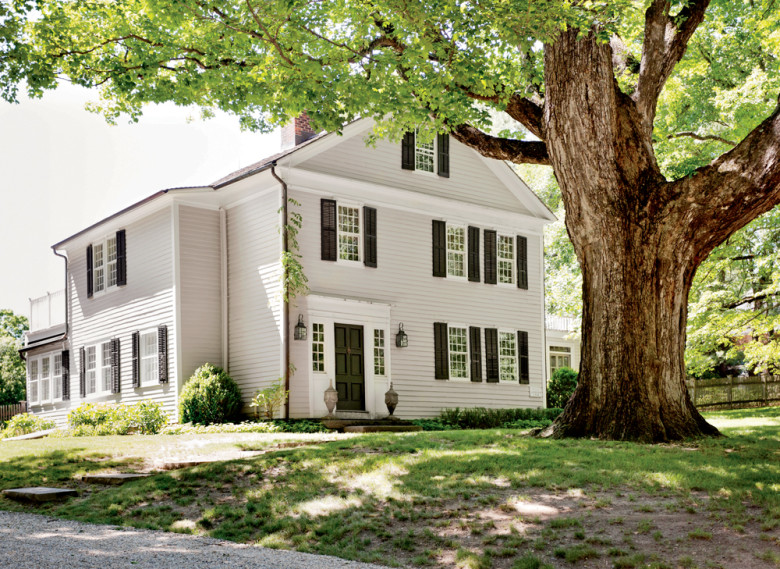
Photo Credit : Rikki Snyder
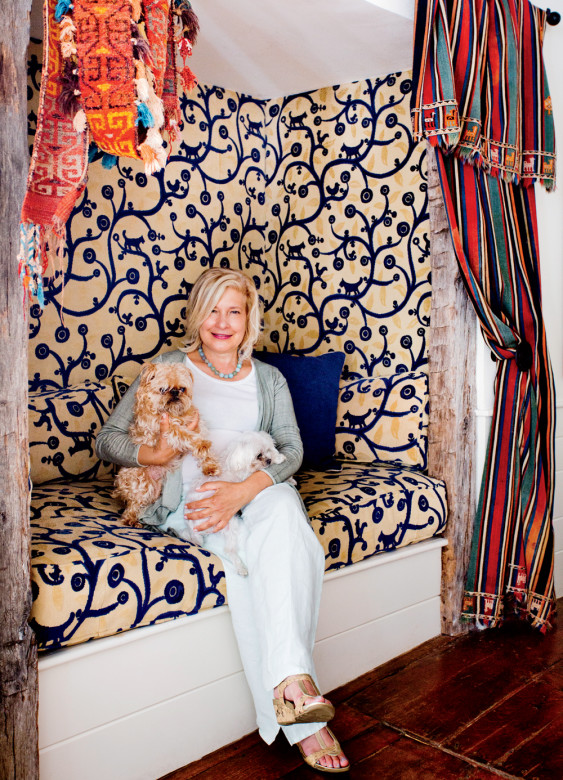
Photo Credit : Rikki Snyder
It’s a delicate balancing act, updating a historic home to our personal and modern-day tastes—a dance between preserving the integrity of the home’s past lives and giving it new life. To Allen, the fulcrum of that balance is remembering to think outside any particular time period, culture, or aesthetic genre while embracing the original home’s authentic qualities and unique quirks.
That came naturally, given her own diverse aesthetic influences. Besides designing rugs and owning a vintage-textile business that sells to the fashion industry, Allen has worked in interior design for the past 20 years. Blending influences is a fundamental part of her work. Sometimes that means importing designs from around the globe—art and furnishings picked up while traveling in China, India, Turkey, and Europe. Sometimes it means pulling inspiration from her family’s antique-textile archive, a pre–World War I trove from which she sells exquisite fabric patterns to the likes of J.Crew and Ralph Lauren for use in their collections.
Her work, in fact, is what led Allen to Woodbury, a town in the Berkshire foothills with an unusual share of colonial homes and buildings. “I live in New York City during the week and wanted to get a train easily here in my off time, to make sure I could really use the house and enjoy it,” Allen says. And when she stumbled across the 3,000-square-foot, four-bedroom home originally owned by the Judsons, a prominent local family, she “fell in love with it for so many reasons.” She was delighted by the abundance of texture and light throughout the home. “As a rug designer, I long for that. For things that look handmade in these techie times. I wanted to look at the floors and see that they were made by a real human.”
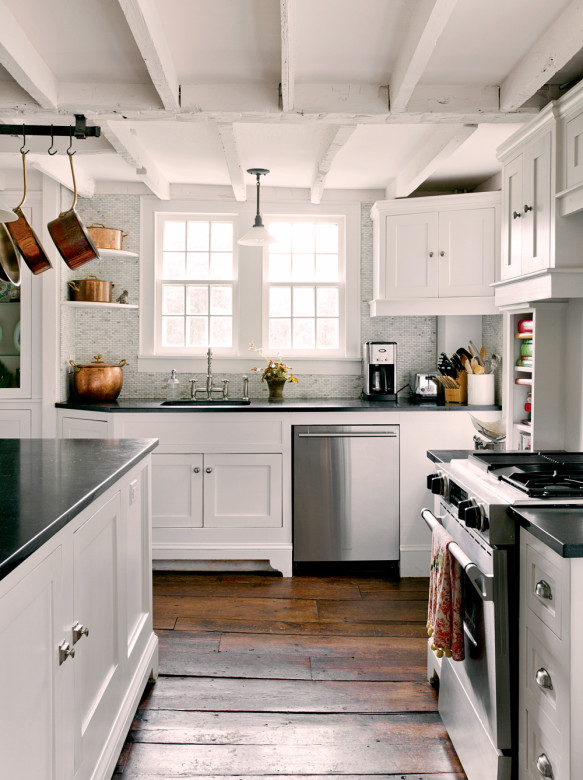
Photo Credit : Rikki Snyder
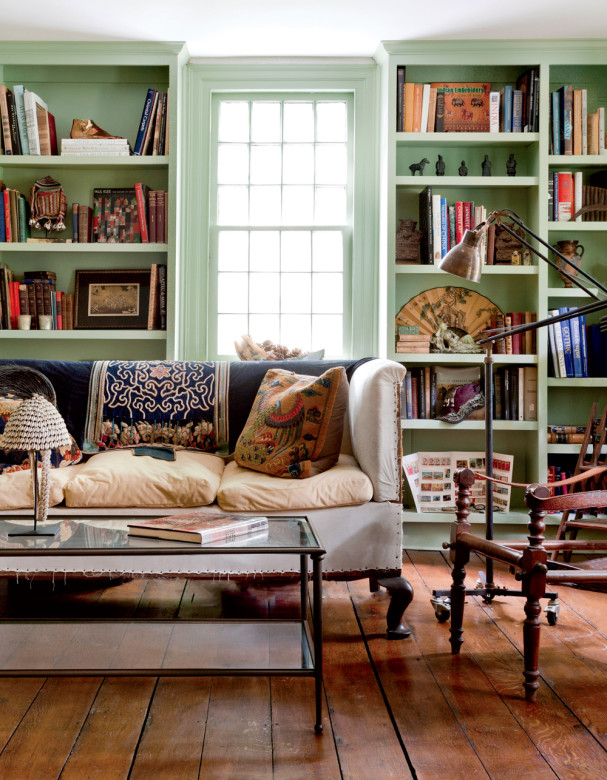
Photo Credit : Rikki Snyder
To that end, she has kept as many original details as possible, from flooring and beams to radiators, while adding her own flourishes. By the time the renovations were finished, the original part of the house had become the kitchen, and the attic above that had transformed into the master bedroom and bath. The latter’s unexpected wall treatment: surrounding the glass-enclosed shower and the freestanding tub with laser-cut tiles in a bird-and-vine pattern. “It uses old materials but a very new technique, so it’s a mix of vintage and contemporary.” Meanwhile, Allen left the wooden floor intact: “I like the uneven wood with its great texture.”
Downstairs, to make the ceiling appear higher, she painted the beams white. In the living room, she met the challenge of an unusually long space by creating a nook filled with the textiles she loves: a 19th-century Khamseh horse blanket recast as a curtain; cozy down cushions covered in cut velvet; a 19th-century Uzbek bedcover on the wall.
The broad mix of styles, ethnic antiques, colors, and price points—from precious to mass-market—springs from a simple philosophy: “Good design. And I don’t care if it’s uniform.” In fact, rather than fight the disparate periods and styles, she celebrates them. “An 18th-century chandelier and a contemporary piece of artwork can work together so well in shape and color.” And she uses color to create surprises: “In a range of blues and greens, I love a pop of purple or burgundy. I don’t want it too stiff or overplanned.”
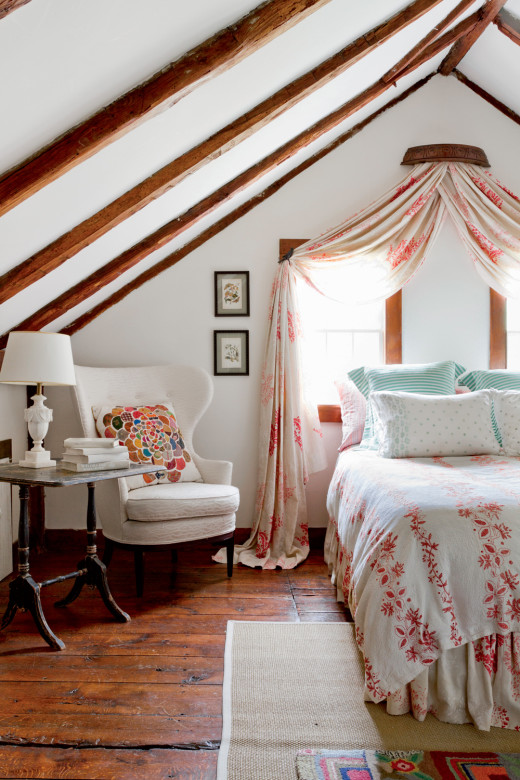
Photo Credit : Rikki Snyder
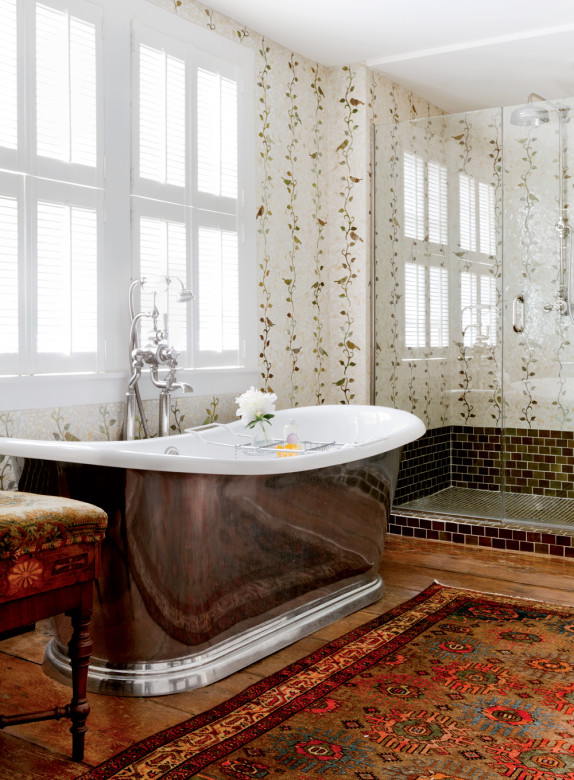
Photo Credit : Rikki Snyder
Which, inevitably, brings us back to the porch. Surrounding the Victorian fireplace are, in no particular order: a pair of classic Chinese urns, a mask that seems plucked from a Jean Cocteau movie, a woven canopy bed, and a Plexiglas coffee table discovered on the Internet. Facing that? A 1960s sofa that Allen picked up in California, topped off with blue-and-white pillows (HomeGoods) chosen for their obvious beauty and, she says, silken texture.
There’s that word again: texture. It’s why Allen chose an atypical combination of handmade brick floors, granite walls, and recycled barn wood for the porch. “Everyone fought me on using barn wood on the ceiling,” she says. “They thought it would be too dark, but to me it makes the space much more intimate.”
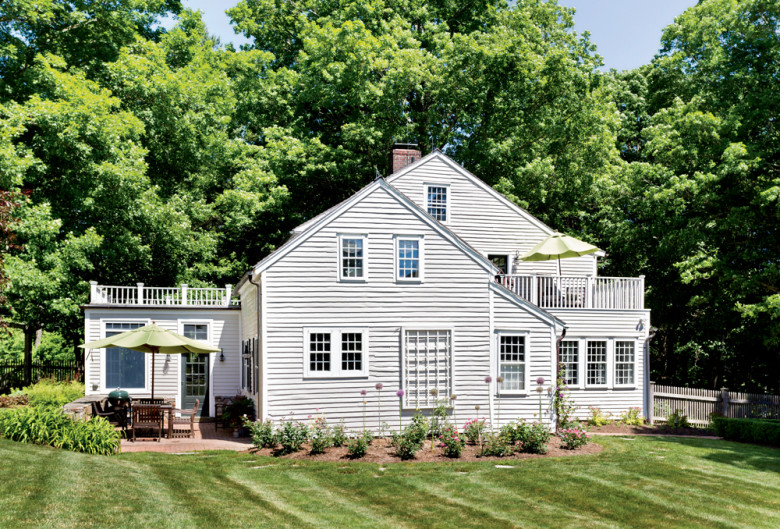
Photo Credit : Rikki Snyder
Unlike so many old New England houses, this one doesn’t adhere to any historic rules. Yet, like so many, it’s been added to over time. “It’s not a historic creation by any means,” acknowledges Allen. But being a part of its past clearly makes living in it all the more personal for her. “I know this house will outlast me,” she says, easing back into one of her cherished pillows. “I love that it’s a living thing.”


